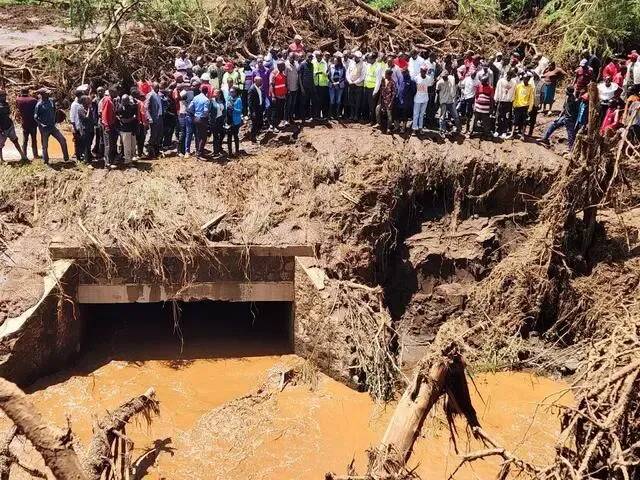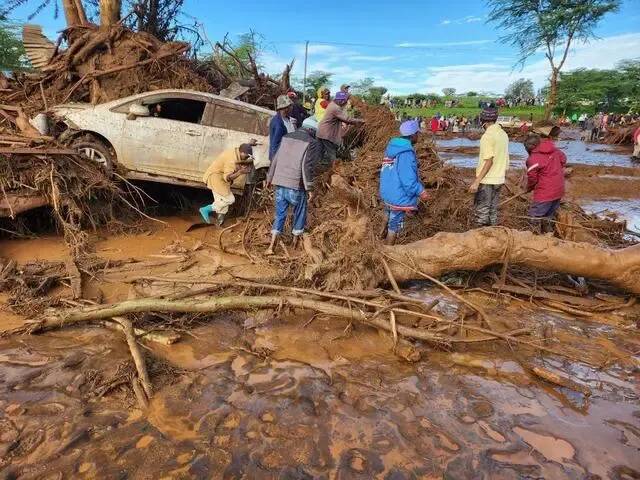Sudden! Kenya's heavy rains caused heavy losses in Neri, Kiambu and other coffee-producing areas
Recently, the East African countries Kenya, Tanzania, Burundi and other countries have been hit by continuous torrential rains, and caused some floods, landslides and other disasters, resulting in serious losses in many countries in East Africa.
At present, Kenya has been severely damaged. On April 27, a Kenyan government spokesman released a report saying that recent heavy rains in Kenya triggered flooding, which has affected 130000 people in Kenya. Thousands of houses have been washed away and roads and bridges have been damaged.

In addition, the total number of deaths caused by heavy rainfall is 76, but more casualties are expected when the floodwaters recede. According to data from the Kenyan meteorological department, this round of heavy rainfall is expected to last until May 6.
However, on the 29th, the Kenyan police reported that a dam north of Nairobi had burst, but the Kenyan Ministry of Water Resources (CS) later reported that the flood was caused by the blockage of a section of the river under the local railway roadbed.
The flood occurred in Nakuru County, north of the capital Nairobi, because the flood poured down the mountain in the middle of the night, killing at least 45 people and injuring more than 110. a section of road, a large section of railway tracks, embankments and trees washed down the hillside, causing a lot of economic losses.

In addition, the crisis is still unresolved, and according to the Kenya Water Resources Authority (WARMA), Kenya currently has seven hydropower dams operating at full capacity, with water levels reaching recent highs and being transported downstream. But there is therefore a risk of flooding caused by overflow and potential dam break. Therefore, communities living near the dam are urged to remain vigilant and strictly abide by the warnings and instructions issued by the authorities.
It is understood that at present, the areas hit by torrential rains in Kenya are mainly concentrated in the central part of the country, the capital Nairobi and nearby areas. These areas are also the main coffee producing areas in Kenya, such as Neri Nyeri, Nakuru Nakuru, Kiambu Kiambu and so on. At present, it is in the flowering and fruiting period, and the picking period does not enter until June. This rainstorm and flood will seriously affect the next production season.
According to data from the coffee auction and trading center in Nairobi, Kenya, due to the recent rise in the international futures price of Arabica coffee, the auction price of coffee in Kenya has also risen.
Earlier, 26813 bags of 50-kilogram coffee beans were sold at auction, with an average price of $252 per bag, or $5.04 per kilogram, an all-time high.
Some traders said that coffee prices are likely to rise further in the future because of recent torrential rains in many countries in East Africa, which will reduce coffee production in the next quarter.
However, the Kenyan government attached great importance to the flood disaster and, according to the Vice President of Kenya, allocated 4 billion shillings (about 2. 1.4 billion yuan) to deal with the devastating flood disaster.
In addition, on May 1 today, according to the Chinese Embassy in Kenya, recently, continuous heavy rainfall and bad weather have occurred in many parts of Kenya, causing floods and other natural disasters, causing heavy casualties and property losses, as well as tourists stranded. The Kenyan meteorological department predicts that most areas in Kenya will continue to be affected by heavy rain in the future.
Pay attention to the recent weather changes, especially the early warning of flood and waterlogging disasters, raise the awareness of flood control and epidemic prevention, make rational travel plans, avoid disaster areas, and make plans to deal with them. Strengthen flood prevention and epidemic prevention measures such as factories, camps and residences, and transfer to safe areas as soon as possible if necessary.
Important Notice :
前街咖啡 FrontStreet Coffee has moved to new addredd:
FrontStreet Coffee Address: 315,Donghua East Road,GuangZhou
Tel:020 38364473
- Prev

This blue bottle coffee actually prohibits taking photos outdoors!!
▲ Click to pay attention| Daily Boutique Coffee Culture Magazine Coffee Workshop sits next to the floor-to-ceiling windows of the cafe, enjoys the traffic or natural scenery outside the window, and slowly sipping a cup of coffee. This is probably the scene that many people hope for to enjoy coffee. Blue Bottle Coffee Shop, which emphasizes "one store, one design", also takes the exam when designing the store
- Next

2024 Excellence Cup COE returns to Ethiopia
It is understood that the full name of COE is "Cup of Excellen", which translates to the Cup of Excellence. It is the first coffee event held in Brazil in 1999 by the non-profit organization Excellence Coffee Organization (ACE). It is also the first global Internet auction platform for award-winning coffee. And every country
Related
- Why does hot American coffee taste bitter? Difference in proportional concentration between hot American and ice American
- Is espresso stored overnight in the refrigerator harmful to your body? Is frozen coffee better than freshly ground coffee?
- What parameters and proportions of water temperature should be used to grind and brew fresh coffee beans? Why can't I drink freshly roasted coffee right away?
- Customers have "changed" Manner's new products! Shop assistant: Please don't mess around!
- Remove sockets in customer areas at Starbucks stores?! Netizen: I won't go if I really tear it down
- What is the difference between the taste steps of sun-dried coffee and washed coffee? Why is sun-cured coffee sweeter and washed coffee sour?
- The recipe for salty grapefruit dirty is revealed! Coffee Festival salty grapefruit dirty coffee making materials parameters ratio milk share!
- How about the flavor of Sunlight 74158 at Sidamo Banshaha Mathieu Processing Factory in Ethiopia? 74158 Share the proportion of coffee brewing parameters!
- What effect does Italian American coffee with filter paper have? Will coffee taste better if it is put on filter paper at the bottom of the powder bowl?
- What is the color difference in coffee beans? What are the characteristics of honey processed coffee beans? Why are the anaerobically treated coffee beans uneven in color?

